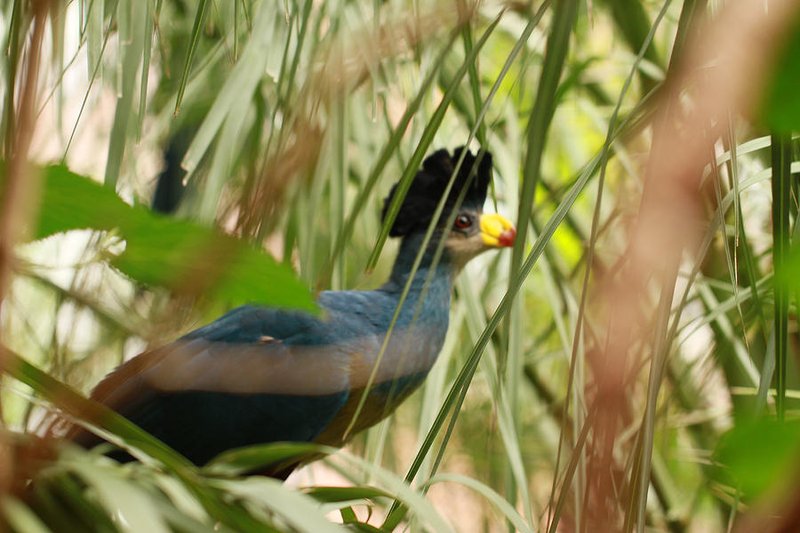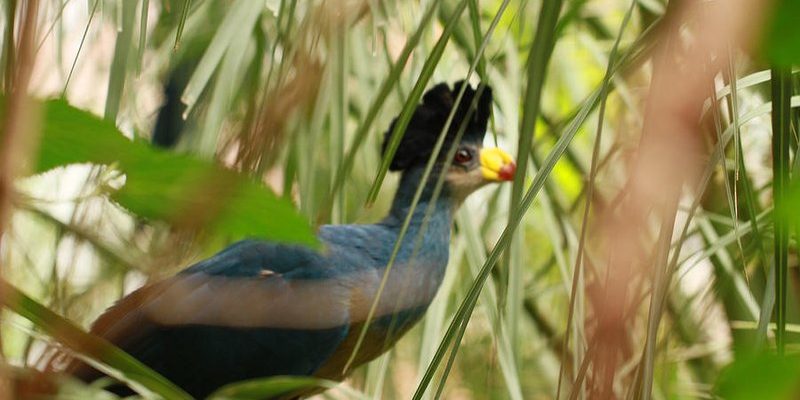
Have you ever seen a bird that looks like it just stepped out of a painting? That’s the Turaco for you! These stunning birds are native to Africa and are known for their bright plumage and unique personalities. Imagine walking through a lush forest, and suddenly, a flash of vibrant green or blue catches your eye. That’s likely a Turaco, drawing attention with its striking colors and lively behavior.
Turacos belong to a family called Musophagidae, which translates to “banana eaters.” This quirky name comes from their fondness for ripe bananas and other fruits. But there’s much more to these birds than just their diet. They are fascinating creatures with a rich tapestry of behaviors, habitats, and social structures. If you’re curious to learn more about them, you’re in for a treat!
Let’s dive deeper into the world of Turacos and discover what makes them stand out among other birds. From their physical features to their habitats, we’ll explore the life of these remarkable avians.
Physical Characteristics
One of the first things you’ll notice about Turacos is their amazing colors. They come in various shades, primarily green, blue, and red. The most common species, the Great Blue Turaco, has a vivid blue body with bright green wings, while the White-cheeked Turaco boasts striking red patches. But it’s not just their colors that captivate; it’s also their distinct features.
Turacos have a unique pigment called turacins, which gives them their bright green and red hues. Unlike many birds, their colors don’t come from structural coloration but rather from these pigments, making them especially vivid. This is quite rare in the bird kingdom! Their bodies are typically medium-sized, ranging from about 14 to 28 inches in length, depending on the species.
In terms of personality, Turacos are playful and highly social. They often engage in acrobatic displays, flitting from branch to branch with grace and agility. Their long tails help them maneuver through the trees, making it easy to navigate their forest homes. With their charming antics, it’s no wonder they are beloved by bird watchers and nature enthusiasts alike.
Habitat and Distribution
Turacos are found primarily in the forests of sub-Saharan Africa. They thrive in dense, tropical rainforests and are most commonly seen in regions like the Congo Basin and parts of East Africa. These birds prefer areas with plenty of trees, where they can hide from predators and easily access their favorite foods.
Their forest habitats provide not just shelter but also an abundance of fruits like bananas, berries, and figs. This is where they truly shine! Turacos have adapted well to living in the canopy, often perching high in the trees. Their bright colors help them blend in with the foliage, but they can also stand out, warning off potential threats. Isn’t nature clever?
Interestingly, Turacos are not just confined to forests. Some species can be found in more open woodlands or even in gardens, where they often visit feeders set up by bird lovers. This adaptability means you might catch a glimpse of them even in urban areas, adding a splash of color to everyday life.
Diet and Feeding Habits
So, what’s on the menu for a Turaco? These birds are primarily frugivores, meaning they eat a lot of fruit. You might find them happily munching on bananas, berries, and various tropical fruits. They have strong, curved beaks that help them grip and tear food apart, making it easier to enjoy their meals. Their love for fruit not only satisfies their hunger but also plays a significant role in the ecosystem—by dispersing seeds, they help plants grow in new areas.
In addition to fruit, Turacos will also eat flowers, leaves, and occasionally insects or snails if they need a protein boost. They are not picky eaters, but they do prefer soft, ripe fruits. Watching them feed can be quite entertaining as they hop around branches, searching for the juiciest treats.
You might be wondering how they find their food. Turacos rely heavily on their acute eyesight. They can spot food from a distance, and their intelligence plays a role in understanding the best times to forage. As social birds, they often feed in groups, which helps them stay vigilant against predators while enjoying their meals together.
Behavior and Social Structure
Turacos are known for their lively and gregarious nature. They tend to live in small groups or family units, often consisting of a mated pair and their offspring. Their social behavior is fascinating—Turacos communicate through a series of calls and whistles, which vary depending on the context. This vocal ability helps them maintain their bonds and warn each other of potential dangers.
These birds are also quite playful! You might see them engaging in chase games or playful displays, especially during the breeding season. Their courtship rituals involve elaborate flight displays, where males show off their vibrant plumage to attract females. This not only strengthens their pair bonds but also makes for an entertaining spectacle for anyone lucky enough to witness it.
Another interesting aspect of Turaco behavior is their territoriality. While they are social creatures, they can be fiercely protective of their mating territories. Males will defend their space through vocalizations and displays, ensuring that other birds know not to intrude. This balance of social interaction and territorial behavior adds depth to their lives as wild creatures.
Conservation Status
Unfortunately, like many species, Turacos face threats to their populations. Habitat destruction due to deforestation and agricultural expansion is a significant concern. The loss of their forest habitats limits their ability to find food, breed, and thrive. Additionally, hunting and trapping, though less common, can impact certain species.
Conservation efforts are underway to protect these stunning birds and their habitats. Many organizations are working to raise awareness about the importance of forests and biodiversity. By preserving these ecosystems, we can help ensure that Turacos continue to grace our planet with their beauty.
Some species of Turaco are listed as vulnerable or endangered, highlighting the need for ongoing conservation work. Protecting their habitats is crucial not just for Turacos but for the entire ecosystem, as these birds play a vital role in seed dispersal. If you’re passionate about wildlife, consider supporting conservation initiatives aimed at preserving both Turacos and their natural environments.
Fascinating Facts about Turacos
| Size: | 14 to 28 inches in length |
| Weight: | Approximately 1.5 to 7 pounds |
| Diet: | Fruits, flowers, leaves, insects |
| Habitat: | Tropical rainforests, woodlands, gardens |
| Breeding: | Usually monogamous; pairs mate for life |
| Lifespan: | 10 to 15 years in the wild |
How to Spot a Turaco in the Wild
Spotting a Turaco in the wild can be an exciting adventure! If you’re planning a trip to Africa or exploring local gardens, keep an eye out for these colorful birds. Start by visiting areas with dense foliage, like forests or parklands. Turacos are often seen perching high in trees, so a good pair of binoculars can make all the difference.
Listen for their distinct calls, which often sound like a series of whistles or squawks. If you hear these sounds, it’s a good sign that Turacos are nearby. Patience is key—sometimes, they need a moment to reveal themselves. Look for their vibrant colors peeking through the leaves, and once you spot one, you might be amazed at how many others are around!
Remember, respecting their space is crucial. Enjoy observing them from a distance without disturbing their natural behavior. Whether you’re a seasoned birdwatcher or a curious beginner, spotting a Turaco can be a rewarding experience that deepens your appreciation for wildlife.
FAQ
What are the different species of Turaco?
Turacos are a diverse group of birds, with about 23 different species. Some well-known examples include the Great Blue Turaco, White-cheeked Turaco, and the violet Turaco. Each species has unique characteristics, but they all share that vibrant coloration that makes them so special.
Do Turacos migrate?
No, Turacos are generally not migratory birds. They tend to stay within their established territories throughout the year, as they rely on specific habitats for food and nesting. However, some individuals might move locally in search of food during certain seasons.
How do Turacos attract mates?
Mating season is an exciting time for Turacos. Males perform elaborate flight displays and vocalizations to attract females. Their vibrant plumage plays a significant role in this courtship, as females often choose mates based on their appearance and display skills.
Are Turacos social birds?
Yes, Turacos are very social! They often live in groups or pairs and enjoy the company of fellow birds. Their social behavior includes feeding together, engaging in playful antics, and communicating through various calls and whistles.
What sounds do Turacos make?
Turacos are known for their diverse vocalizations. They produce a range of calls, including whistles, squawks, and caws. Each species has its unique set of sounds, which they use to communicate with each other, warn of danger, or attract mates.
Can Turacos be kept as pets?
While Turacos are beautiful birds, they are best suited to life in the wild rather than captivity. Their social needs, dietary requirements, and space for flight can be challenging to meet in a home environment. It’s essential to appreciate these birds in their natural habitat instead.
What threats do Turacos face in the wild?
Turacos face several threats, including habitat loss due to deforestation, hunting, and the expansion of agriculture. These factors can lead to declining populations, making conservation efforts crucial for their survival.
How can I help conserve Turacos?
You can help conserve Turacos by supporting wildlife conservation organizations focused on protecting their habitats. Additionally, raising awareness about the importance of biodiversity and sustainable practices can contribute to the preservation of these beautiful birds.
What do Turacos eat?
Turacos primarily eat fruits, but they also enjoy flowers, leaves, and occasionally insects. Their diet mainly consists of soft, ripe fruits, which they find in abundance within their forest habitats.
How long do Turacos live?
In the wild, Turacos typically live for 10 to 15 years. Their lifespan can be influenced by factors like habitat quality, availability of food, and threats from predators.
Are Turacos endangered?
Some species of Turaco are considered vulnerable or endangered due to habitat destruction and other threats. Conservation efforts are in place to protect these birds and their habitats, highlighting the importance of preserving biodiversity.

